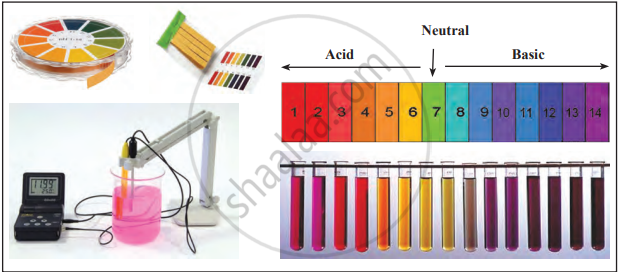Some natural and synthetic dyes can change their colour in acidic and basic solutions, and these are called acid-base indicators. The pH scale ranges from 0 to 14, representing the strength of acids and bases. A universal indicator is used to show variations in pH across the entire scale by displaying different colours for different pH values. The universal indicator is a mixture of several synthetic indicators combined in specific proportions to provide a wide range of colours corresponding to pH levels.

Measurement of pH : universal indicator and pH meter
Colour Changes:
- For acidic solutions (pH < 7), the indicator shows colours like red or orange.
- For neutral solutions (pH = 7), the colour is green.
- For basic solutions (pH > 7), the indicator shows colours like blue or purple.
The pH of a solution can be determined using:
- A universal indicator solution.
- pH paper, which is paper soaked in universal indicator.
- A pH metre is an electrical instrument providing the most accurate pH measurement by dipping electrodes into the solution.
Universal indicators are commonly used in laboratories and education to study the acidic or basic nature of substances and to measure pH levels conveniently.
